When a homeowner is faced with a roof insurance claim denial, it’s crucial to understand the next steps. Dealing with a damaged roof can be stressful, and the added complexity of insurance procedures may seem daunting. However, homeowners have several options and rights that can help them navigate through this challenging scenario. It’s important to carefully review the insurance company’s reasons for denial and verify if the terms of the roof warranty or contract with the roofing company, such as Pinnacle Home Improvements, have been taken into consideration.
Roof warranties and insurance policies can be intricate, and the grounds for a roof claim denial might vary. It might be due to issues within the roofing materials or installation, which could potentially be covered under a separate warranty from the roofing company. In some cases, it is advisable to consult with professionals to accurately assess the situation. Pinnacle Home Improvements and similar roofing companies are often willing to assist their clients in determining the best course of action, whether it involves replacing issues that may have led to the claim denial or guiding them through the process of a warranty claim.
Understanding Your Roof Insurance Policy
When dealing with a roof insurance claim denial, it is pivotal for policyholders to thoroughly understand their insurance policy details and the specific reasons for the claim’s rejection.
Review Your Coverage Details
The first step one should take is to meticulously examine their insurance policy documentation. This should include:
- Policy Limits: The maximum amount the insurance will pay.
- Deductibles: The amount the policyholder is responsible for paying out-of-pocket.
- Covered Perils: Events or damages covered by the policy (e.g., fire, hail, wind).
- Exclusions: Specific damages or circumstances that are not covered.
- Roof Warranty: The duration and extent of the roof’s warranty may affect the coverage.
One can typically find this information in the ‘Declarations Page’ of their insurance policy.
Reasons for Claim Denial
Understanding why an insurance claim was denied is essential in determining the next steps. Common reasons for roof insurance claim denials include:
- Wear and Tear: Damage due to aging or poor maintenance is generally not covered.
- Incorrect Filing: Errors in the claim form or missing documentation can lead to denial.
- Failure to Report: Not reporting damage in a timely manner.
- Excluded Damages: Damage types or causes that are specifically excluded in the policy.
Policyholders should seek specific reasoning from their insurance company for the denial and compare it against their policy details. This precise understanding can guide them in contesting the denial or in future preventative measures.
Immediate Actions Post-Denial
After a roof insurance claim denial, it is crucial for the homeowner to act promptly and diligently to address the situation. They need to ensure the damage is thoroughly documented and understand the process for challenging the denial.
Document the Damage
Immediately after the denial, the homeowner should record all evidence of the roof damage. This includes:
- Taking clear, date-stamped photographs or video footage of the damage.
- Saving samples of damaged materials if possible.
- Obtaining a written assessment from a roofing professional.
- Keeping a record of any related expenses incurred.
Initial Steps to Challenge the Denial
To begin the process of challenging the denial, a homeowner should:
- Review the denial letter carefully for the insurer’s reasons for denial.
- Check their policy to understand what is covered and the deadlines for filing an appeal.
- Contact their insurance provider to request a detailed explanation of the denial and to ask about the appeals process.
- Consult with a roofing contractor or public adjuster for a second opinion on the damage.
- Consider legal advice if the claim involves significant damage or complex issues.
Professional Assessment and Estimate
When an insurance claim for roof damage is denied, the homeowner should seek a professional assessment from a qualified roofing expert. This expert will carefully inspect the roof to determine the extent of the damage and provide a detailed estimate for replacement costs. It is vital to select a roofing company with a solid reputation and credentials to assure accurate and reliable information.
Roof Inspection Services:
- Comprehensive damage assessment
- Identification of replacement needs
- Documentation for insurance purposes
- Written estimates for replacement
Homeowners should expect the roofing company to offer a range of services such as roof replacements and inspections. A thorough roof inspection can reveal issues not initially seen and bolster the homeowner’s position if they choose to appeal the insurance company’s denial.
Roofing Estimate Components:
- Materials: Type and quality
- Labor: Time and manpower required
- Warranty: Coverage of materials and workmanship
- Timeline: Projected start and completion dates
The roofing company professional’s assessment and the estimate will be instrumental in contesting the denied claim. Accurate and thorough paperwork from a credible roofing company serves as an essential foundation for negotiations with the insurance company. This evidence helps to substantiate the appeal process, providing a clear rationale for why the claim should be reconsidered and covered.
Navigating the Appeals Process
When a roof insurance claim is denied, policyholders have the right to an appeals process. Firstly, they should carefully review the denial letter from the insurance company. This document typically outlines the reasons for the denial and provides instructions on how to appeal the decision.
Secondly, gather additional evidence. This may include:
- Photos of the damage
- Replacement estimates
- Reports from roofing experts
Documentation is crucial. Policyholders should compile all correspondence related to the claim, including any phone calls and emails.
Here is a step-by-step guide to appealing the denial:
- Review the Policy: Understand the coverage and limitations.
- File the Appeal: Submit the appeal in accordance with insurer’s guidelines.
- Consult Professionals: Seek advice from roofing contractors or claim specialists.
- Meet Deadlines: Adhere to deadlines for submitting additional information.
- Keep Records: Maintain a log of all interactions regarding the appeal.
For policyholders who need assistance, professional guidance on challenging insurance claim denials is available. They offer expertise in interpreting insurance policies, negotiating with insurers, and advocating on the policyholder’s behalf.
Insurance companies must provide a clear explanation for any claim denial. If the explanation is not satisfactory or the policyholder believes the decision was incorrect, they should not hesitate to begin the appeals process. Their persistence and attention to detail during this time can be the key to a successful resolution.
Exploring Alternative Solutions
When a roof insurance claim is denied, one has several avenues to pursue. It’s important to assess alternative financing options for roof replacements and to understand the practical steps involved.
Contact the Insurance Company: A policyholder should first request a detailed explanation of the denial. They may find grounds for an appeal or discover that a simple clerical error can be corrected.
Get a Second Opinion: If damage assessment is disputed, consider hiring an independent inspector. Their report might provide the leverage needed for a successful appeal.
Seek Professional Advice: Consult with a roofing contractor for an accurate estimate of replacement costs. They can often recommend financing solutions tailored for roof work.
Explore Financing Options:
| Financing Type | Description | Potential Benefit |
| Personal Loan | Unsecured loan from a bank or credit union | No collateral required |
| Home Equity Loan | Secures the loan against home equity | Lower interest rates |
| Credit Card | Short-term financing option | Quick access to funds |
| Government Grants and Loans | May be available for certain individuals such as veterans | Favorable terms |
Consider Alternative Materials: If a full roof replacement is necessary, explore varying materials. Some may be more affordable or offer longer warranties.
Negotiation: Negotiate with the roofing contractor for a payment plan or explore bartering services if cash flow is a concern.
One’s approach should be methodical and informed – exploring all options and choosing a route that aligns with their financial capabilities.
Legal Guidance and Support
When a roof insurance claim is denied, homeowners should consider seeking legal guidance to understand their options. A lawyer specialized in property insurance can help interpret the policy, navigate the legal process, and determine if the insurance company’s decision can be contested.
Key Steps:
- Review the Denial Letter: Carefully read the denial letter for the specific reasons your claim was denied.
- Assess Policy Coverage: With the help of a lawyer, review your policy details to ensure the denial aligns with the terms of the policy.
- Gather Documentation: Compile evidence such as the insurance policy, photos of the damage, and any previous correspondence with the insurer.
- Consult a Lawyer: Engage a lawyer experienced in insurance disputes to evaluate the validity of the denial and the potential for negotiation or appeal.
Preparing for Further Legal Action:
- Understand Your Rights: Learn about your legal rights and the deadlines for filing lawsuits against insurance companies.
- Legal Strategy: The lawyer can formulate a legal strategy which may include alternative dispute resolution methods like mediation or arbitration.
- Filing a Lawsuit: If necessary and advised, the lawyer may initiate litigation to seek a favorable resolution.
It is essential to act within the timeframe specified in the policy for disputes or further action. A qualified legal professional can provide objective advice on the best course of action and represent the homeowner throughout the process.








